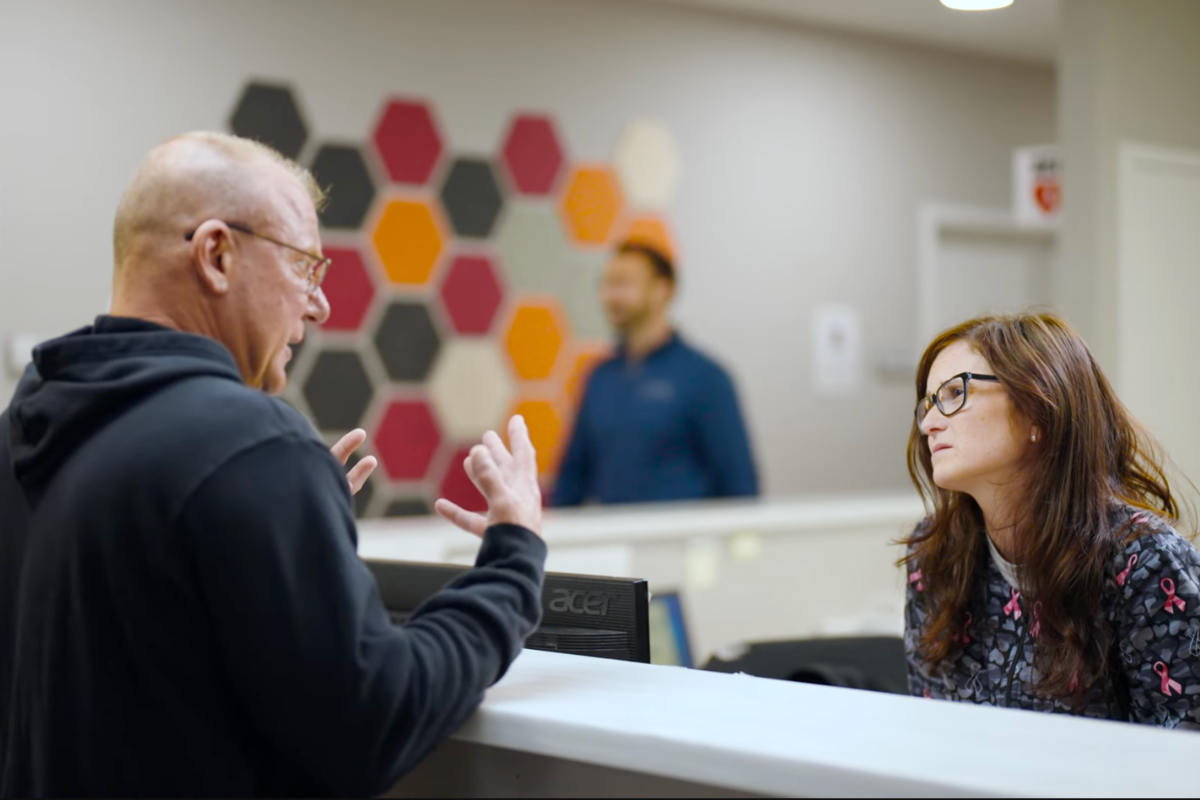What is Prescription Drug Abuse?
Prescription drug addiction happens when someone becomes physically or psychologically dependent on medication that was originally meant to help them — whether for pain relief, sleep, anxiety, or other medical conditions. Commonly misused prescription drugs include opioid painkillers like oxycodone or hydrocodone, sedatives like benzodiazepines (such as Xanax), and stimulants used to treat ADHD (like Adderall).
Addiction doesn’t mean a person is “weak” or “bad.” It’s a medical condition that changes the brain’s reward system, making it harder to stop using the drug even when it causes harm. Over time, tolerance builds up — meaning a person needs more of the medication to feel the same effects — and withdrawal symptoms can make quitting feel impossible without help.
Why is prescription drug abuse such a problem?
The U.S. has faced a devastating rise in prescription drug misuse over the past few decades. Many factors have contributed to this rise in abuse and addiction.
Overprescribing
In the 1990s and early 2000s, many opioid painkillers were prescribed too freely. The potential for abuse and dependency on these drugs was often downplayed or poorly communicated to patients.
Accessibility
Because these drugs are legally prescribed, many people mistakenly believe they are always safe to use.
Underlying issues
Chronic pain, mental health struggles, stress, and trauma can make people more vulnerable to misusing medications.
A Growing Problem
According to the Centers for Disease Control and Prevention (CDC), more than 16,000 people died from overdoses involving prescription opioids in 2021 alone. That’s a heartbreaking statistic — and it highlights why awareness, prevention, and treatment are so crucial.
Symptoms of Prescription Drug Addiction
It’s important to understand and be able to identify the signs of prescription drug abuse and addiction — whether in yourself or in a loved one.
Taking More Medication Than Prescribed
Examples include finishing prescriptions early or running out of pills before a refill is due, increasing the dose of a medication without consulting or getting approval from the prescribing doctor, and taking the medication at odd times or more often than needed.
“Doctor Shopping” and Secretive Behavior
A person experiencing prescription drug addiction may see multiple doctors or visit different pharmacies in an attempt to get extra prescriptions. They may also lie about or conceal their prescriptions, hide pill bottles or medications in unusual places, or be secretive about their medication schedule.
Noticeable Personality + Behavior Changes
Examples include mood swings, irritability, or anxiety — especially when medication runs out — and loss of interest in hobbies, work, or family activities. Sudden financial problems, unexplained spending, and social withdrawal are also signs.
Noticeable Physical Changes + Symptoms
This can include drowsiness, slurred speech, or appearing “out of it,” having poor coordination, frequent “accidents,” or falling asleep at odd times, noticeable weight loss, changes in sleep patterns, or displaying flu-like symptoms (withdrawal) when a medication runs out or is unaccessible.
Defensiveness or Denial
This may include getting angry or defensive when asked about medication use, trying to justify their “need” for a larger dose or higher number of pills, and downplaying how much or how often they’re using.
Any one of these behaviors alone might not mean someone has an addiction, but if you see several together, it’s a strong sign they may be struggling and need help. Prescription drug addiction is powerful because it changes the brain’s reward and control systems, and once dependence sets in, stopping often requires professional support, not just willpower.
Prescription Drug Abuse Treatment
Seeking professional help is crucial for individuals struggling with substance use disorder, including addiction to prescription medications. Treatment for substance use disorder typically involves a combination of medical interventions, counseling, and support. Here are some common components of prescription drug abuse treatment:
Medically Supervised Detox
The first step in treatment is often medical detox in a facility. Medical detox allows individuals to safely clear their bodies of prescription drugs under the supervision of medical professionals. Medical monitoring and treatment for painful or uncomfortable withdrawal symptoms can make the detox process easier, more comfortable, and less likely to end in relapse.
Medication-Assisted Treatment (MAT)
MAT is a cornerstone in treatment for opioid use disorder, which includes addiction to prescription painkillers like oxycodone or hydrocodone. FDA-approved medications (like buprenorphine, methadone, or extended-release naltrexone) can reduce cravings and withdrawal symptoms, stabilizing brain chemistry so people can focus on recovery.
Residential Addiction Treatment
Residential rehab means a person lives full-time at a licensed treatment facility (typically for 30, 60, or 90 days) where they receive round-the-clock medical supervision and support, structured therapy, and peer support in a safe, substance-free environment. For many people struggling with prescription drugs, rehab provides the time, safety, and structure needed to break free from dependence and build a solid foundation for lasting recovery.
Behavioral Therapies
Evidence shows that medication alone is not enough for lasting recovery. Behavioral therapies like Cognitive Behavioral Therapy (CBT), Contingency Management, or Motivational Interviewing help people understand the triggers behind drug misuse, build healthier coping skills for stress, pain, or trauma, and strengthen motivation to stay sober and in recovery.
Supportive Services and Aftercare
Addiction is a chronic brain disease, so long-term follow-up and support are crucial to continued recovery. Research shows that people who stay connected to support groups, recovery coaching, or outpatient treatment have much lower relapse rates than those who go it alone (McLellan et al., Addiction, 2000).
Source:
McLellan AT, Lewis DC, O’Brien CP, Kleber HD.
Drug dependence, a chronic medical illness: implications for treatment, insurance, and outcomes evaluation.
More about our services
What is a Prescription Drug Treatment Center?
A prescription drug treatment center is a specialized facility that provides comprehensive care and support to individuals struggling with prescription drug addiction. These centers have a team of experienced professionals specializing in addiction treatment, including doctors, therapists, counselors, and support staff. Here’s what you can expect from a reputable prescription drug treatment center:
Individualized Treatment Plans
Each person’s journey through addiction and recovery is unique. A reputable prescription drug treatment center will develop individualized treatment plans tailored to each individual’s specific needs and circumstances. Treatment plans may involve a combination of therapies, medications, and supportive services.
Safe and Supportive Environment
Prescription drug treatment centers provide a safe and supportive environment where individuals can focus on their recovery. These centers are free from triggers and temptations associated with drug use, allowing individuals to develop new coping skills and healthy habits.
Holistic Approach
Prescription drug treatment centers often take a holistic approach to treatment, addressing the physical, mental, and emotional aspects of addiction. They may incorporate alternative therapies such as yoga, mindfulness practices, art therapy, and recreational activities to promote overall well-being and healing.
Continuum of Care
Recovery is a lifelong journey, and a reputable prescription drug treatment center recognizes the importance of ongoing support. They offer a continuum of care, including aftercare programs, relapse prevention strategies, and ongoing support to help individuals maintain their sobriety and navigate life’s challenges after treatment.


